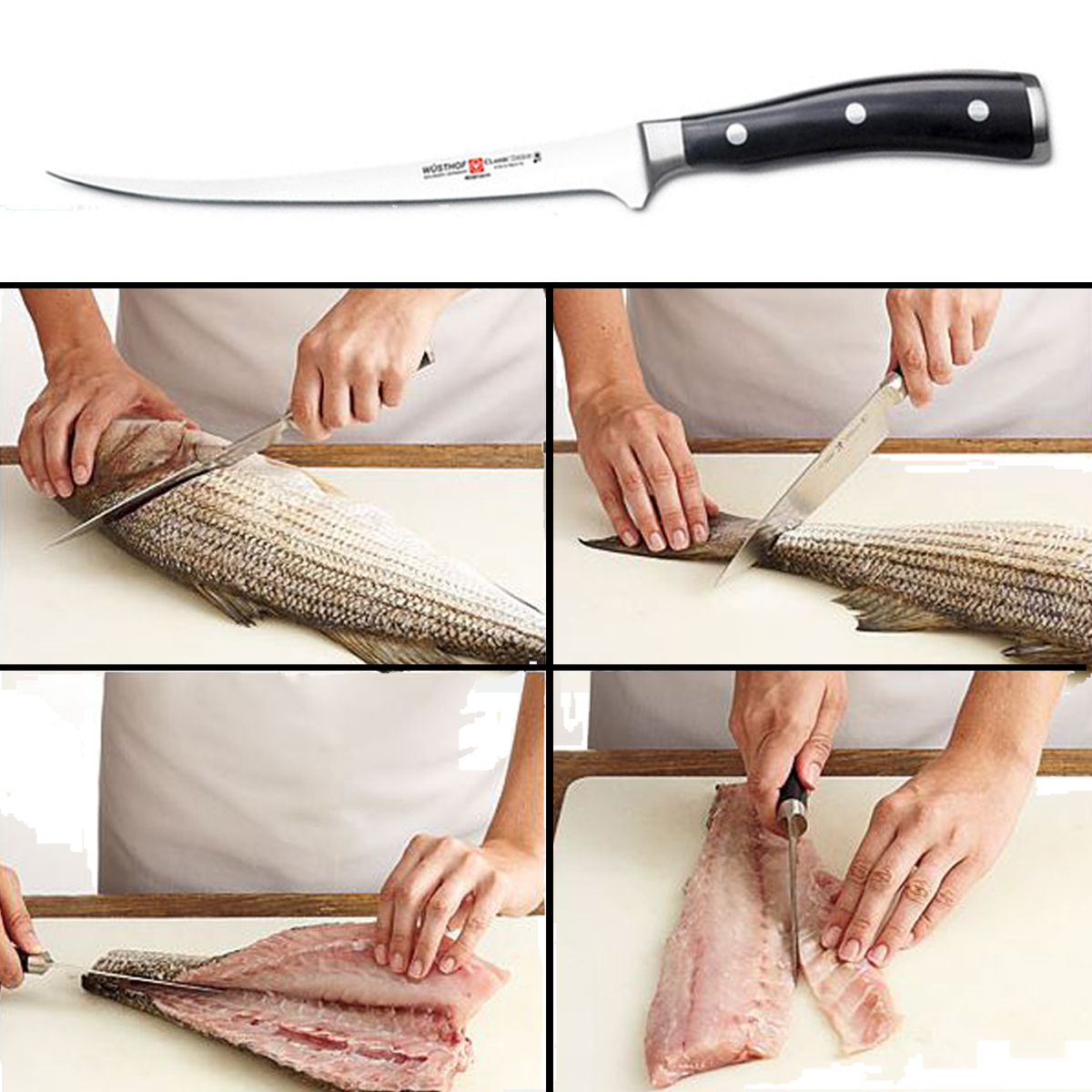Fileting a Fish in 5 easy Steps. Fileting fish takes considerable skill, lots of practice and a good knife. You can purchase a good filet knife at a restaurant supply store or online at sites like Amazon. Filet knifes are sharp, thin and flexible. If you own a good set of knifes, you probably already own one. Larger fish are easier for novices.
Step 1: Remove head
Place chef’s knife behind the pectoral fin; make a diagonal downward cut through bone. Repeat on opposite side; discard head.
Step 2: Remove tail
Place chef’s knife where the tail fin joins the body, and make a straight cut down through the flesh and bone; discard fin.
Step 3: Cut Fillet
Starting at head end, run a fillet knife along the backbone in a smooth motion. (This may take more than one cut.) Cut around the rib cage to separate the fillet.
Step 4: Trim
Cut away the thin belly portion of the fillet. While fine to eat, it will cook quicker than the rest of the fillet and is higher in fat. It can also be reserved for making stock.
Step 5: Remove Skin
With fillet skin-side down, place chef’s knife at the tail end between the skin and the flesh. Run the knife slowly along the fillet with the knife blade angled ever so slightly downward, firmly gripping the skin as you cut.
After you have filleted your fish, if you are not going to cook them right away, you’ll want to store them properly.To do this, find a 9 x 12 pyrex casserole dish, or similar pan that will fit in your refrigerator. Fill the pan halfway with ice, then cover the ice with saran wrap. Place the fish on top of the saran wrap and store in the refrigerator until you’re ready to cook.
If you are in the keys, and want to see it done expertly, head to the nearest marina offering off-shore fishing charters around 3 or 4 in the afternoon. The mates will be filleting the days catch for their patrons. You’ll be awed by their skill and speed, and equally fascinated by the flurry of activity that ensues as giant pelicans and seagulls scream and fight over the discarded carcasses.
If you filet your fish at a fish cleaning station at your vacation rental or campground, be sure to disinfect and dry the area before and after cleaning your fish.
Discard your carcasses in the water – not in a garbage can. Carcasses discarded in garbage cans will rot and attract flies, rats and raccoons.
Carcasses thrown in the water – will attract crabs, catfish and sharks.




